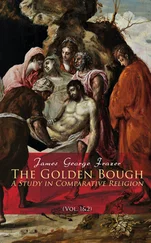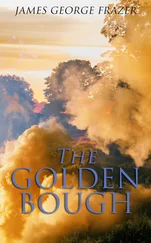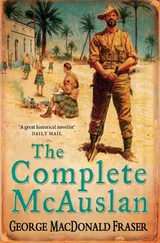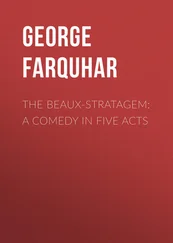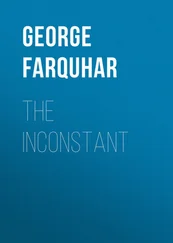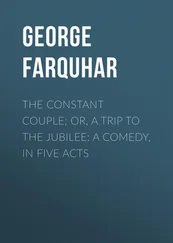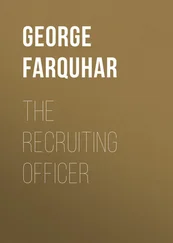George Fraser - The Steel Bonnets
Здесь есть возможность читать онлайн «George Fraser - The Steel Bonnets» — ознакомительный отрывок электронной книги совершенно бесплатно, а после прочтения отрывка купить полную версию. В некоторых случаях можно слушать аудио, скачать через торрент в формате fb2 и присутствует краткое содержание. Жанр: unrecognised, на английском языке. Описание произведения, (предисловие) а так же отзывы посетителей доступны на портале библиотеки ЛибКат.
- Название:The Steel Bonnets
- Автор:
- Жанр:
- Год:неизвестен
- ISBN:нет данных
- Рейтинг книги:4 / 5. Голосов: 1
-
Избранное:Добавить в избранное
- Отзывы:
-
Ваша оценка:
- 80
- 1
- 2
- 3
- 4
- 5
The Steel Bonnets: краткое содержание, описание и аннотация
Предлагаем к чтению аннотацию, описание, краткое содержание или предисловие (зависит от того, что написал сам автор книги «The Steel Bonnets»). Если вы не нашли необходимую информацию о книге — напишите в комментариях, мы постараемся отыскать её.
The Steel Bonnets — читать онлайн ознакомительный отрывок
Ниже представлен текст книги, разбитый по страницам. Система сохранения места последней прочитанной страницы, позволяет с удобством читать онлайн бесплатно книгу «The Steel Bonnets», без необходимости каждый раз заново искать на чём Вы остановились. Поставьте закладку, и сможете в любой момент перейти на страницу, на которой закончили чтение.
Интервал:
Закладка:
On his head the rider wore the steel bonnet, which in the early part of the century was usually the salade hat, basically a metal bowl with or without a peak, or the burgonet, a rather more stylish helmet which, in its lightest form, was open and peaked. These head-pieces, many of which would be home-made by local smiths, were gradually replaced in Elizabethan times by the morion, with its curved brim, comb, and occasional ear pieces.
Over his shirt the rider might wear a mail coat, but the more normal garment was the jack, a quilted coat of stout leather sewn with plates of metal or horn for added protection. It was far lighter than armour, and almost as effective against cuts and thrusts; backs and breasts of steel might be worn by the wealthier Borderers, but for horsemen whose chief aim was to travel light they were a mixed blessing. The Scots Borderers were officially recognised by the Privy Council as “licht horsemen” who were not obliged to serve in heavy armour during war; the English Borderers, when employed on campaigns, were similarly used as scouts and “prickers”.
Leather boots and breeches completed the clothing, which was without badges except in war-time, when the riders wore kerchiefs tied round their arms as signs of recognition, as well as the crosses of St George or St Andrew, according to their nationality—or their allegiance. Embroidered letters attached to their caps were also used for war-time identification. (There was a suspicion in the English Army in the 1540s that the English March riders used these identifying signs not only to be known to each other, but “that thei used them for collusion, and rather bycaus thei might be knowen to th’enemie, as the enemies are knowen to them, for thei have their markes too, and so in conflict either each to spare other, or gently each to take other. Indede men have beeen mooved the rather to thinke so, bycaus sum of their crosses—the English red cross—were so narrow, and so singly set on, that a puff of wynde might blowed them from their breastes.”) 2
This light and serviceable costume, so suitable for the cut-and-run activities of its wearer, reflected also the changing military patterns of the day. The sixteenth century saw a revolution in warfare; it was the bridge between the medieval knights and men-at-arms, with their heavy armour and weapons, and the age of firepower.
Gunpowder had come into its own, and when it was discovered that mail did not stop a bullet, the whole concept of protective equipment changed. Long leather boots took the place of greaves, plate gave way to the reinforced coat, and the knight’s casque to the open helmet.
The great change, of course, was in missile weapons. For two centuries England’s military thinking had been dominated by one of the most lethal hand weapons in the history of warfare: the six-foot long bow with which the English peasant had mastered the powers of chivalry. Naturally, England was reluctant to change from this proven battle-winner, and in this as in most other military developments she lagged behind the Continent, even under such a war-conscious monarch as Henry VIII.
The hand-gun v. long bow controversy, which reached a climax in Elizabeth’s reign, was a bitter one. The bow school, apart from their sentimental reasons, urged the efficiency of the archer who could despatch twelve shots a minute into a man-sized target at 200 paces (practice at shorter ranges was actually forbidden in Henry’s time); against this the new arquebus could fire only ten to twelve shots an hour when Elizabeth came to the throne, although the rate had risen to thirty-five to forty by 1600. An arquebus was unsuitable in wet weather, it was cumbersome, and it cost 30s. (A bow cost about 6s 8d, with arrows). The Earl of Sussex, on the Border in 1569, demanded archers, not “ill-furnished harquebusiers”, and local opinion seems to have supported him; the tenants of Home Cultram, as late as 1596, rejected calivers as too expensive.
But the fire-arms lobby, which included such influential figures as the veteran Sir Roger Williams, eventually got their way; in the 1560s the majority of English infantry carried the long bow, but by 1600 it was virtually obsolete in the country as a whole. On the Border, however, where a light, rapid-fire weapon was needed, the bow lived longer; in Leith Ward, Cumberland, in 1580, the muster roll showed over 800 bowmen to nine arquebusiers, and in the 1583 muster the English West March counted 2500 archers, with no mention of fire-arms. Hundreds of hand-guns with ammunition were sent to Berwick in 1592, but the powder was unreliable, and as for the guns, “when they were shot in, some of them brake, and hurte divers mennes hands.” In the same year Richard Lowther asked only for bows for the defence of Carlisle. 3
Like the local peasant infantry, the Border riders also used the bow, but there is increasing mention as the century progresses of their carrying arquebuses, the light pieces called calivers, and the dag, the heavy hand-gun which was the tough equivalent of the modern large-calibre pistol.
The principal close-quarter weapons of the Border foot soldier were the bill, the long cleaver-cum-pike which had lasted through the Middle Ages, the spear, and a local arm called the Jedburgh axe, with a distinctive round cutting edge. Swords are seldom mentioned in the English muster rolls, but the March riders of both sides certainly carried them, occasionally with small shields.
However, in peace or war, the rider’s favourite weapon was the lance. These were sometimes over thirteen feet long, but usually must have been shorter. They were used couched, for thrusting, and also for throwing. Camden describes the Borderers on horseback spearing salmon in the Solway; anyone who has tried to spear fish on foot will appreciate the expertise required to do it from the saddle.
Eure pronounced on this Border skill without qualification: he found the March riders better at handling lances on horseback than Yorkshiremen, and “better prickers in a chase as knowing the mosses, more nimble on foot.”
This then was the Borderer’s armoury, for war-time campaign or peace-time raid. So if one mounts the reiver on his hobbler, with steel cap, jack, lance, cutting-sword, dagger, and hand-gun, 4 he is fully equipped and ready to be pointed at the target—farm, village or grazing herd, peel tower or sheiling. This, quite literally, was his day’s work.
1.Froissart says twenty to twenty-four leagues a day, which is around seventy miles. It has been suggested that this is an incredible distance for armed riders, and that for “leagues” one should read “miles”. But Howard Pease has produced evidence to show that when Froissart said leagues he meant just that (i.e. three miles), and as we know that in 1603 Robert Carey rode close on 400 miles from London to Edinburgh in sixty hours (and took a nasty wound on the way, which reduced his speed) it seems safe to credit Froissart’s estimate.
As to their mustering speed, there is abundant evidence, in Warden’s correspondence and elsewhere, of the Borderers’ ability to be armed and riding in force in a remarkably short time after an alarm; John Maxwell of Herries reckoned that 350 horsemen could be assembled in thirty minutes.
2.The authority again is William Patten, a shrewd Londoner who accompanied Somerset’s Scottish expedition in 1547. One of his army acquaintances was young William Cecil, later Lord Burghley; the two of them kept journals of the expedition, which Patten used when he published his account of the campaign.
3.Possibly the fact that one Scottish monarch, James II, had lost his life through a bursting cannon in 1460 helped to prejudice the Scots against fire-arms. Hertford noted in the 1540s that the “Scotishe borderers … love no gonnes, ne will abyde withyn the hearyng of the same”.
Читать дальшеИнтервал:
Закладка:
Похожие книги на «The Steel Bonnets»
Представляем Вашему вниманию похожие книги на «The Steel Bonnets» списком для выбора. Мы отобрали схожую по названию и смыслу литературу в надежде предоставить читателям больше вариантов отыскать новые, интересные, ещё непрочитанные произведения.
Обсуждение, отзывы о книге «The Steel Bonnets» и просто собственные мнения читателей. Оставьте ваши комментарии, напишите, что Вы думаете о произведении, его смысле или главных героях. Укажите что конкретно понравилось, а что нет, и почему Вы так считаете.

